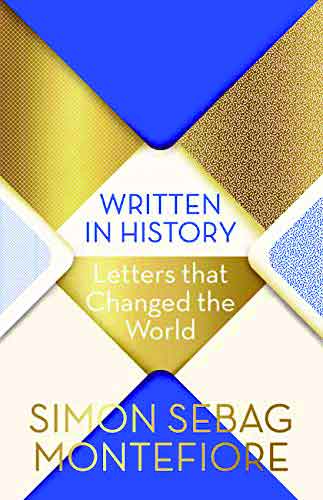Written in History
Author - Simon Sebag Montefiore
Publisher - Weidenfeld & Nicolson, Rs 599
Through its collection of rare letters written by or to historically relevant figures, this book offers a new version of history, says Avantika Pokhriyal
You know you have a good book in hand when you are afraid of reading more than a few pages each day, lest it finishes too soon! After all, good wine and good books are best enjoyed at leisure. Each letter of Written in History is of critical value not just as a historical document but also as a means of humanising these otherwise larger-than-life personages. One realises that certain human emotions have (un)surprisingly remained unchanged from the time of Octavius Caesar (a contemporary of Christ) to that of Frida Kahlo (d.1944). Each letter is a unique treasure trove. For an instance, one of the most unexpected letters was that by Bonaparte. Napoleon’s letter to his newly-wedded wife is over brimming with youthful ardour, reckless passion and sexual innuendos that one would hardly associate with the French dictator:
Your letters are the joy of my days, and my days of happiness are not many
It makes you realise that the shrewd statesman is also an ardent lover. The anxieties, frustrations, insecurities and passions articulated by these letter-writers makes them that much easier to identify (and, in most cases, sympathise) with.
In this day and age, it is rather difficult, for some, to grasp the concept that a letter might have held great charm beyond its functionality. Letters were not just a necessity in a world where people across social classes, relied solely on them to bear tidings — good or bad — to friends and family, they were also a marker of a person’s education and taste. Writing a good letter was a cultivated art which formed an important part of the self-fashioning of society’s elites, in particular. In the days before the advent of the World Wide Web, letters had the power to make or break fortunes — sometimes literally so.
For instance, Elizabeth I, the future Tudor monarch, escaped execution as a result of the extremely well-crated letter that she wrote to her half-sister Mary, the Queen of England. A tour de force in diplomacy.
Letters are usually seen as a rather personal form of expression but they have always been able to carry news which is of a decidedly public or political nature. The flexibility of the epistolary form is abundantly clear when one looks at the topics covered in Written in History: Love, War, Friendship and Family, to list a few. Many a wars in the history of the world have begun, and yet many avoided because of contents of certain letters. It is indeed a timeless form of writing and one has to give credit to the editor for bringing such exceptionally wonderful and diverse range of letters to the reading public. The introductory note appended to each piece is extremely pertinent and concise, and enables one to contextualise her reading. One only wishes that some of these letters were a little longer.
TS Eliot’s rather sanctimonious advice to George Orwell in 1944, is contained in a letter that the reader must not miss. The former was, by this time, an established writer and also worked as an editor at Faber and Faber, where Orwell submitted his manuscript for publication. In this letter Eliot rejects Orwell’s now-renowned 1984 by stating that:
…we have no conviction…that this is the right point of view from which to criticise the current political situation at the present time
Clearly, failure must never be allowed to mar one’s self-esteem. Indeed, even the very best writers have had to face rejections in life.
This one though has been preserved, much to the embarrassment of Eliot admirers, for posterity.
However, the most moving letter has to be Vilma Grunwald’s letter to her husband Kurt Grunwald, moments before her death at Auschwitz. As Montefiore’s note tells the readers, she chose to die with her son who, because of his limp, was immediately condemned to the gas chambers. Vilma displayed exemplary courage and maternal love through this decision. The letter is all the more precious because very few letters of the inmates of the camps have survived from the Holocaust. While a chilling reminder of the horrors of human history,
this letter also gives us hope that
even at its worst moments, humanity has the potential to redeem itself through courage, love and self-sacrifice. Vilma writes:
Take care of the little golden boy and don’t spoil him too much with your love…I will be thinking of you and Misa. Have a fabulous life, we must board the trucks.
Some of the letters in this book — it is just a privilege to read.
This is a book that I would recommend to readers of all kinds because there is something for everyone here: from the history aficionado to the student of literature, to the curious reader. Nothing reveals a person’s nature and emotions like a letter.


























